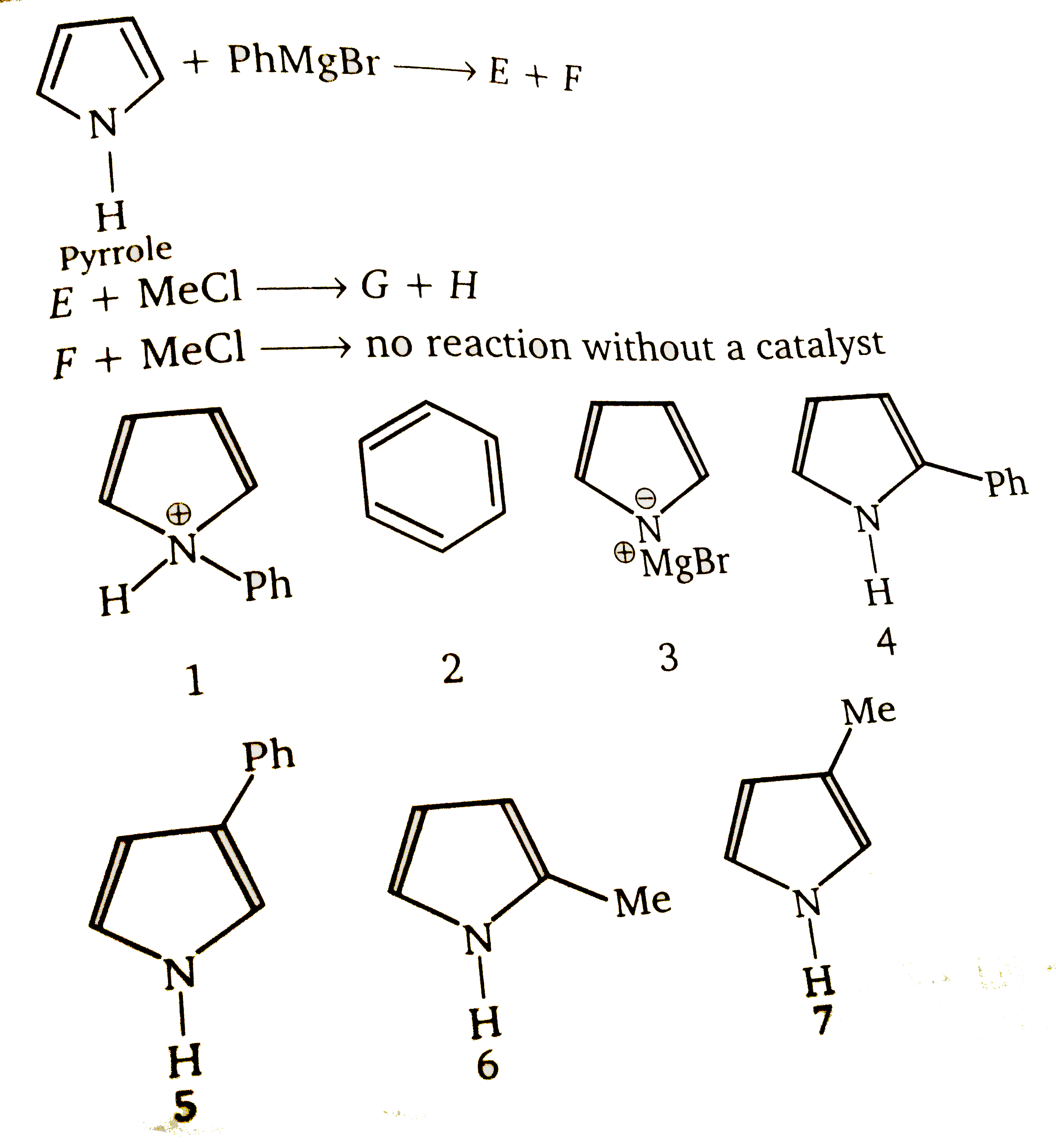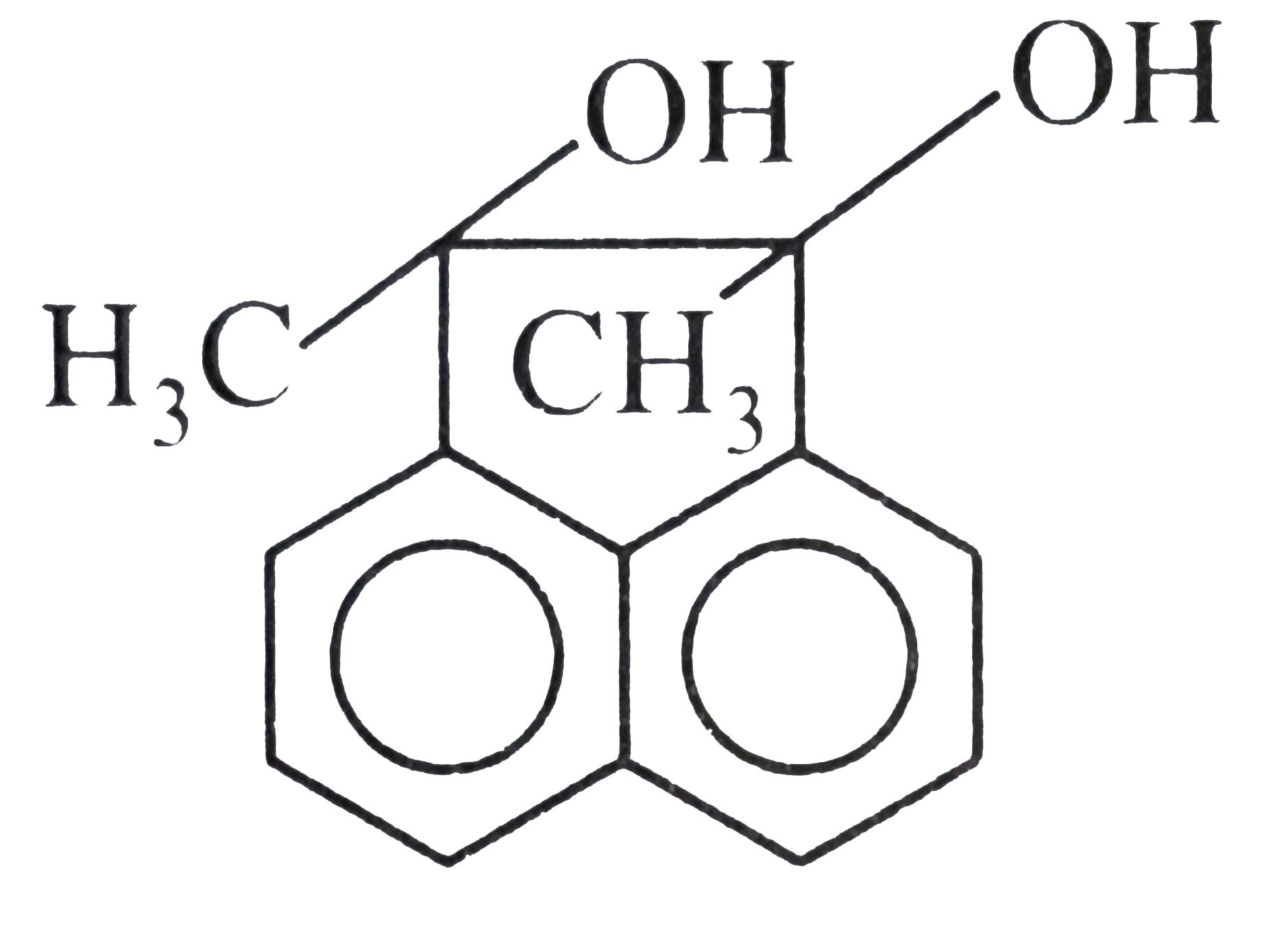
no reaction without a catalyst

The structure of products , respectively are
3, 2, 6, 7
4, 5, 6,1
3,4,5,2
3,2,4,5
The correct Answer is:A
Topper's Solved these Questions
- BOOK - MS CHOUHANCHAPTER - AROMATIC COMPOUNDSEXERCISE - Level 1 (Q.31 To Q.60)1videos
AROMATIC COMPOUNDS
- BOOK - MS CHOUHANCHAPTER - AROMATIC COMPOUNDSEXERCISE - Level 1 (Q.121 To Q.150)3videos
AROMATIC COMPOUNDS
- BOOK - MS CHOUHANCHAPTER - AN INTRODUCTION TO ORGANIC REACTIONS AND THEIR MECHANISMS ACIDS AND BASESEXERCISE - ADDITIONAL QUESTION (SINGLE CORRECT CHOICE TYPE )32videos
AN INTRODUCTION TO ORGANIC REACTIONS AND THEIR MECHANISMS ACIDS AND BASES
- BOOK - MS CHOUHANCHAPTER - BIOMOLECULESEXERCISE - Level 21videos
BIOMOLECULES
Similar Questions
Knowledge Check
- Question 1 - Select One
For the reaction 2H(g)→H2(g), the sign of ΔH and ΔS respectively are :
A+,−B+,+C−,+D−,− - Question 2 - Select One
Colemanite + G (compound) rarr A + B + C
CΔ−−→D+E(gas)Baryta water−−−−−−−→
milkyE+H2O−−−−→milkyness disappears
B+E(gas)→A+G,AΔ−−→F+B
F+CuO→Blue bead
F with 3 moles of water gives 2 moles of compound 'H'.'H' on heating to 100∘C gives 'I'.'I' is :AB2O3BCaCO3CH2B4O7DHBO2 - Question 3 - Select One
O(g)+2e−1→O−2(g)−E=+744.7 The reaction for the positive value of e is
Aenothermic reactionBexothermic reactionCboth 1 and 2DAll of the above are wrong
MeC≡C−COClH2+Lindlar's Catalyst−−−−−−−−−−−−−→(A)
The Product (A) is:View SolutionColemanite + G (compound) rarr A + B + C
CΔ−−→D+E(gas)Baryta water−−−−−−−→
milkyE+H2O−−−−→milkyness disappears
B+E(gas)→A+G,AΔ−−→F+B
F+CuO→Blue bead
When 1 mole of 'C' and 2 moles of 'G' are heated the number of moles of 'E' formed is/are 'x'. The number of hybrid or orbitals in 'E' is/are 'y'. then x+y=View SolutionStandard reduction potentials of the half reactions are given below
F2(g)+2e−→2F−(aq)E∘=+2.85VCl2(g)+2e−→2Cl−(aq)E∘=+1.36VBr2(l)+2e−→2Br−(aq)E∘=+1.06Vl2(s)+2e−→2l−(aq)E∘=+0.53V
The strongest oxidising and reducing agents respectively areView SolutionTwo reactions A→ products and B→ products have rate constants ka and kb respectively at temperature T and activation energies are Ea and Eb respectively.
If ka>kb and Ea<Eb and assuming the freuency factor A in both the reactions are same thenView Solution overser(H+)→? Product is View Solution
overser(H+)→? Product is View Solution


